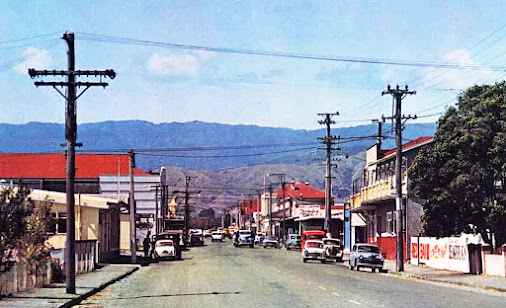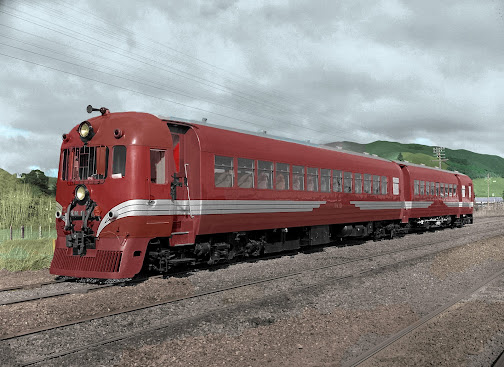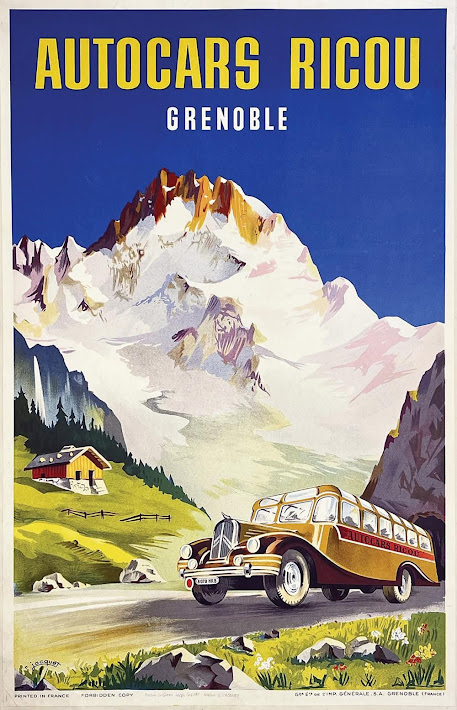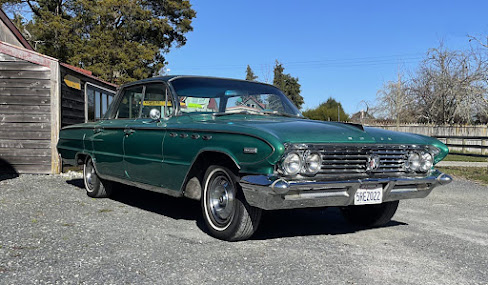The caricatures are rather entertaining. What are those red-tipped batons the man sitting on the crate is dispensing?
Friday, March 31, 2023
Thursday, March 30, 2023
traffic in Brand Boulevard, Glendale, California, greater LA, 1955
At the intersection of Wilson Avenue. On the left is a Pacific Electric PCC trolley/interurban.
a steam locomotive is moved across the Rio Grande river by aerial cables, new Mexico, 1915
The loco looks relatively small (an 0-6-2?), so maybe no more than 30 tons weight, but you can't help marvel at the strength of the cables and supports.
Wednesday, March 29, 2023
Wellington tram circa 1908
It's hard to recognise this setting today as nearly all the buildings have been replaced, the only clue is the wharf shed at bottom left which is still there, now used for exhibition space.
For lots more, see the book Wellington: a Capital century
Tuesday, March 28, 2023
Northern Pacific Railroad sleeper car model
Running on 6-wheel passenger trucks, the prototype was built by the Pullman Car Company in the early 1920s for Northern Pacific as “Chief Arlee.” It was later re-painted in the classic two-tone green paint scheme developed by Raymond Loewy in the 1950s. Even though NP began to replace aging heavyweights with lightweight cars, this car continued to serve NP through the mid-1960s in a standby capacity.
Monday, March 27, 2023
Train Simulator: West Highland, Scotland - the Killin Branch
A kind of tour in steam days of a now closed branch line.
Sunday, March 26, 2023
Ford says it will burn $3 billion on EVs this year, in a bleak signal for the cars that underpin its future
from the Insider
Ford said Thursday it's still losing billions of dollars on electric vehicles and it won't turn a profit on those cars for at least another three years.
Ford gave a peek into the financials for its electric vehicle business, known as Model e, for the first time Thursday. The Model e segment expects to report a full-year loss of $3 billion in 2023 alone, a stark sign that the company still has a long way to go before it makes money on the cars it says will lead its future.
Ford Chief Financial Officer John Lawler rationalized the expected losses on a call with reporters by explaining that Ford Model e exists as an "EV startup within Ford."
"As everyone knows, EV startups lose money while they invest in capability, develop knowledge, build volume, and gain share," Lawler said on the call.
Saturday, March 25, 2023
LA streetcar, November 1954
On the W Line, car 1389 was seen southbound on Marmion Way crossing Figueroa. (Metro Archive)
1948-1954 Sunbeam Talbot 90
90 mph is 145 km/h which doesn't seem that fast, but was obviously enough to be remarkable at the time.
Friday, March 24, 2023
A double-headed steam train out of Wellington, late 1920s
A pair of Ab class 4-6-2 work hard, although none of the train is visible on the bridge over the Hutt Road, so one of them is probably a helper until the easy gradients are reached at Paekakariki. This line, now the Johnsonville Branch, was the Main Trunk to Auckland at the time, until the Tawa deviation was built in the 1930s. It was originally built by private enterprise -- the Wellington and Manawatu Railway Company. Reclamation work in the harbour is obvious. Another train is on the Hutt Valley line but too amorphous to distinguish.
For lots more, see our books.
Thursday, March 23, 2023
What makes a Ferrari worth Ferrari money?
It isn’t a battery.
The engine defines what a Ferrari is; without it, what you have is what everyone else already has.
Put another way, Ferrari aims to do what Tesla did, except in reverse.
When Tesla began selling cars, it was the only car company selling electric cars. It thus presented something different – as opposed to something the same. A silent Tesla was the opposite of a V12-powered Ferrari such as the 812 GTS recently unveiled in Maranello – Ferrari’s headquarters in Italy. Both are extremely quick cars, but how they are quick is what makes each car not a replication of the other car. The Tesla’s driver stands on the accelerator pedal – EVs have no gas pedal – and the car surges forward silently.
SP tunnel motor 5-unit lash-up
The blackness of the lead unit suggests it was usually futher back in trains and spent a fair bit of time in tunnels
Wednesday, March 22, 2023
the flight engineer's controls on Howard Hughes 'Spruce Goose' from 1947
Monday, March 20, 2023
SP Black Widow F7's with an Owl
from American-Rails.com
The Owl was a secondary Southern Pacific train that certainly carried an appropriate name. It operated on an overnight schedule between Los Angeles and San Francisco/Oakland where it began service just prior to the 20th century.
For many years it was the railroad's only overnight run between the two cities, operating along the San Joaquin Route. However, its unique standing was short-lived with the inauguration of the all new, Lark during the early 20th century.
The Owl was normally assigned coaches only and, of course, several Pullman sleepers. During its tenor it was predominantly a heavyweight affair As ridership declined the train was slowly cutback and made its final run during the 1960s, interestingly only a few years before the SP also cancelled the once-proud Lark as well.
two coupled Pacific Electric cars in L.A., 1961
A photo that must have been taken shortly before closure in August 1961, and the condition of the lead car matches the street surface. It is here eastbound on E. 9th Street where it becomes East Olympic Boulevard at Ceres Ave -- present day Google Streetview
Sunday, March 19, 2023
NZR DGs at Belfast station north of Christchurch, 1968
With a short distance passenger train, probably a Rangiora service. This was about the changeover stage from Ab steamers. (Pic by the late Bill Pierre)
Chicago & Northwestern Railroad 4-8-4 lineup
The clipper ship 'Sir Lancelot' passing South Foreland
Saturday, March 18, 2023
Friday, March 17, 2023
the first of NZR's Fiat railcars
RM 101 presents itself at Waikanae in May 1955. For lots more, see our books. (NZR pic, colorized by us)
Thursday, March 16, 2023
Wednesday, March 15, 2023
Lady Penelope's pink 'Rolls Royce' from 'Thunderbirds'
Apparently, Rolls Royce was not happy about any of this, as it was built on a Bedford Duple Vega coach chassis, and merely borrowed the famous grille design. They planned on buying it, so that they could destroy it, but somehow it survived. It went on to be used in the movie Thunderbirds Are Go.
abandoned Soviet hydrofoil
During the Cold War, the Soviet Union was a leader in hydrofoil technology, with nearly 3,000 vessels built for Russian and Ukrainian waterways. Using hydrofoil wings to lift the hull out of the water and decrease drag, these streamlined passenger boats were capable of reaching speeds of up to 150 km/h (90 mph), impressive for the time. (EnglishRussia.com/Abandoned Beauties)
















.png)
































